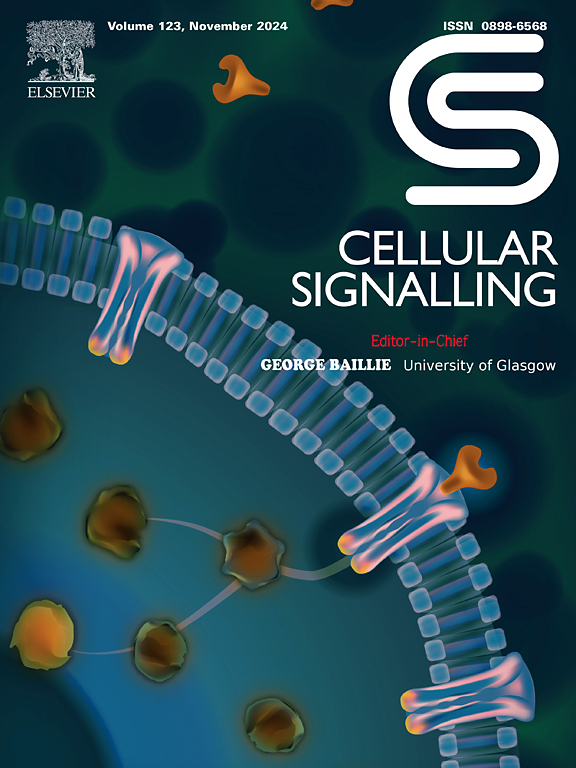铁下垂在乳腺癌中的作用:分子机制和治疗干预。
IF 4.4
2区 生物学
Q2 CELL BIOLOGY
引用次数: 0
摘要
铁凋亡是一种不同于细胞凋亡的铁依赖性细胞死亡途径,在乳腺癌(BC)研究中至关重要,特别是在克服三阴性乳腺癌(TNBC)的耐药方面。与传统的细胞凋亡不同,铁凋亡涉及谷胱甘肽(GSH)/谷胱甘肽过氧化物酶4 (GPX4)轴、铁驱动的氧化反应和磷脂过氧化。TNBC以缺乏雌激素受体(ER)、孕激素受体(PR)和人表皮生长因子受体2 (HER2)为特征,由于酰基辅酶A合成酶(ACSL) 4相关的脂质改变和溶质载体家族7成员11 (SLC7A11)介导的胱氨酸运输,TNBC特别容易发生铁死亡。针对铁下垂的生物标志物和治疗策略的最新进展为TNBC的预后和诊断带来了重大希望。值得注意的创新包括开发小分子化合物和各种方法,旨在提高铁下垂。联合治疗通过抵消化疗耐药和诱导免疫原性细胞死亡,已显示出更好的抗肿瘤疗效。尽管如此,在优化输送机制和减少脱靶效应方面仍然存在挑战。本综述强调了铁下垂研究的进展,并提出了利用BC代谢灵活性的精确肿瘤学策略,旨在改变TNBC治疗并提高治疗效果。本文章由计算机程序翻译,如有差异,请以英文原文为准。
Role of ferroptosis in breast cancer: Molecular mechanisms and therapeutic interventions
Ferroptosis, an iron-dependent cell death pathway distinct from apoptosis, is crucial in breast cancer (BC) research, especially for overcoming resistance in triple-negative breast cancer (TNBC). Unlike traditional apoptosis, ferroptosis involves the glutathione (GSH)/glutathione peroxidase 4 (GPX4) axis, iron-driven oxidative reactions, and phospholipid peroxidation. TNBC, characterized by the absence of estrogen receptor (ER), progesterone receptor (PR), and human epidermal growth factor receptor 2 (HER2), is particularly prone to ferroptosis due to acyl-coenzyme A synthetase (ACSL) 4-related lipid changes and solute carrier family 7 member 11 (SLC7A11)-mediated cystine transport. Recent advancements in biomarkers and therapeutic strategies targeting ferroptosis hold significant promise for the diagnosis and prognosis of TNBC. Notable innovations encompass the development of small-molecule compounds and various methodologies designed to enhance ferroptosis. Combination therapies have demonstrated improved antitumor efficacy by counteracting chemotherapy resistance and inducing immunogenic cell death. Nonetheless, challenges persist in optimizing drug delivery mechanisms and minimizing off-target effects. This review underscores the progress in ferroptosis research and proposes precision oncology strategies that exploit metabolic flexibility in BC, intending to transform TNBC treatment and enhance therapeutic outcomes.
求助全文
通过发布文献求助,成功后即可免费获取论文全文。
去求助
来源期刊

Cellular signalling
生物-细胞生物学
CiteScore
8.40
自引率
0.00%
发文量
250
审稿时长
27 days
期刊介绍:
Cellular Signalling publishes original research describing fundamental and clinical findings on the mechanisms, actions and structural components of cellular signalling systems in vitro and in vivo.
Cellular Signalling aims at full length research papers defining signalling systems ranging from microorganisms to cells, tissues and higher organisms.
 求助内容:
求助内容: 应助结果提醒方式:
应助结果提醒方式:


